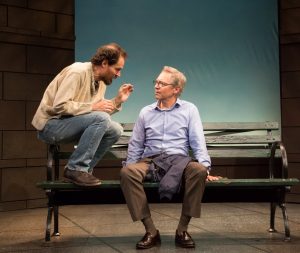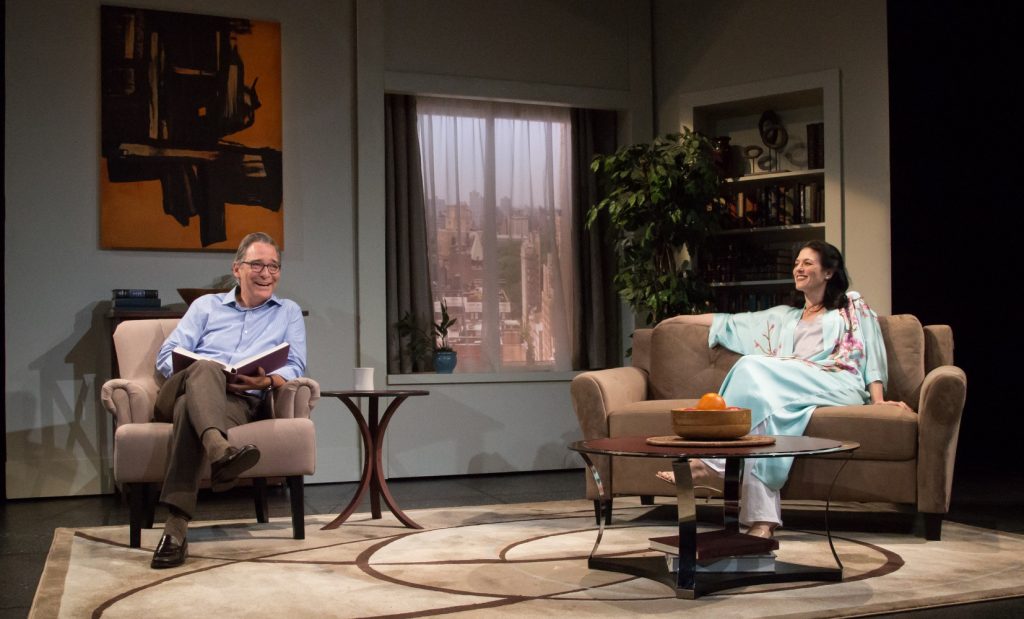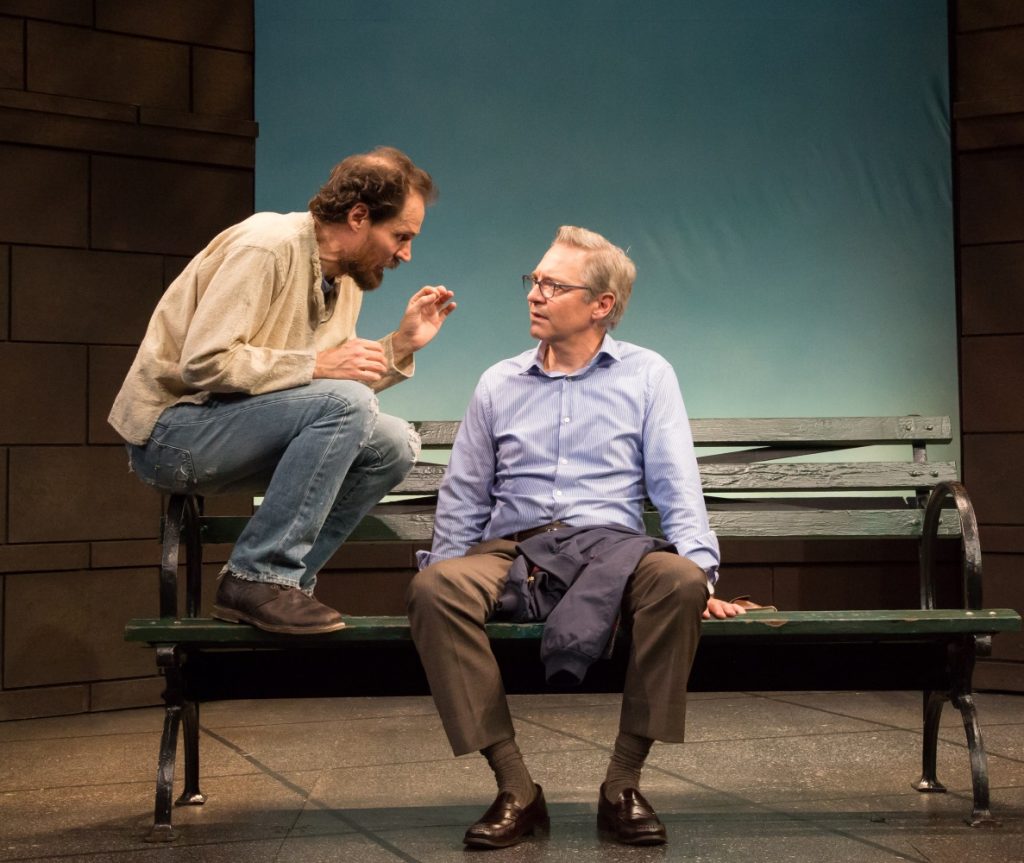At the beginning of At Home at the Zoo, Ann appears from the kitchen and says to her husband Peter, “We have to talk.” Then they talk for an hour, and by the time Peter leaves their apartment to have a quiet read in Central Park, we know a lot more about him than we did in The Zoo Story.
Let me explain.
The Zoo Story, Edward Albee’s career-making one-act, takes place on a park bench where mild-mannered Peter is accosted by aggressively talkative Jerry, whose idea of a conversation is an insistent barrage of questions which turns into a long detailing of his desperately sad existence. Since Jerry does almost all the talking, we find out very little about Peter’s home life except that he’s a textbook publisher who shares a posh Upper East Side apartment with his wife, two daughters, two cats and two parakeets.
Almost 50 years after its 1959 debut, nagged by the feeling that the piece was only “a one-and-a-half-character play,” Albee wrote a prequel, observing Peter at home with his wife (the rest of the household remain offstage) just before he goes out for his fateful encounter with Jerry.
The resulting two-act play premiered at Hartford Stage in 2004 as Peter and Jerry, later retitled At Home at the Zoo. I’d never seen the two-part version before the Berkshire Theatre Group’s current production, which runs in the company’s Unicorn Theatre in Stockbridge through August 26. So it was fascinating to see this early classic completed, and immensely rewarding to watch three topnotch actors flesh out Albee’s vision.
What we mainly find out in the first half of the show is that Peter and Ann’s marriage is fairly happy, if a bit too comfortable for Ann’s taste. Peter admits that “my life may not be very exciting, no jagged edges,” but he feels they have “a good life together.” He’s quite happy to sit reading, at home or in the park, and half the time he barely notices her.
But that’s only a symptom of what Ann really wants to talk about (though in Eric Hill’s otherwise sharply defined production, the connection between her first insistent line and the topic she finally gets around to isn’t entirely clear). “You’re good at making love, but lousy at fucking,” she says calmly.
“Where’s the rage?” she demands. “Where’s the animal?” It takes her a while to build up her own rage, and it takes him until the very end of the play to discover his.
David Adkins and Tara Franklin are both longtime veterans of Berkshire stages. They know each other so well that we completely believe they are an old(ish) married couple. Even in the midst of the characters’ unsettling exchange there’s an underlying trust and connection. Franklin’s Ann is cool and elegant, slowly coming to a boil around the issue which even she knows there’s “nothing to be done about.” In Adkins’ richly understated performance, Peter barely simmers – his reaction to Ann’s dissatisfaction is baffled concern.
 If at home Peter often doesn’t hear, out in the park he can’t help listening. Once Jerry interrupts his reading, he’s a one-man captive audience. And thanks to what we’ve seen of him in Act One, his patient civility is all the more plausible.
If at home Peter often doesn’t hear, out in the park he can’t help listening. Once Jerry interrupts his reading, he’s a one-man captive audience. And thanks to what we’ve seen of him in Act One, his patient civility is all the more plausible.
Joey Collins (who appeared with Franklin in Pinter’s The Homecoming two seasons back) is Jerry – desperately lonely, urgently garrulous, pinning his listener (and us) with a shaggy dog story about a mangy dog, and another one about going to the Central Park Zoo to watch the animals’ behavior.
This and other themes, we now see, have been planted in Albee’s prequel. Jerry’s demand for conversation is exactly what Peter has come here to escape. And it turns out that Peter, in his own quiet way, is as isolated as Jerry. There are also little details that hark us back. Jerry’s talk of his neighbor in the next-door apartment, a “colored queen” in a Japanese kimono, recalls Ann’s own flowered robe in Act One (though I don’t know if that’s Albee’s insertion or costumer David Murin’s).
Collins’ pyrotechnic performance as Jerry places him securely on the short list for this fall’s Berkshire Theatre Awards. He’s edgy but fearless, loose-limbed but tight-wound, pitiful, ironic and a natural showman, slowly goading Peter into fulfilling his wife’s longing for a ferocious act.
Critics have suggested that “The Zoo Story” is a metaphor in which Peter is seen as his namesake, Jesus’ disciple, for whom Jerry becomes a kind of savior through a savage sacrifice. In his staging, director Hill creates a some striking images, including the final one, which drive that point home.
Photos by Emma Rothenberg-Ware
If you’d like to be notified of future posts, email StageStruck@crocker.com




